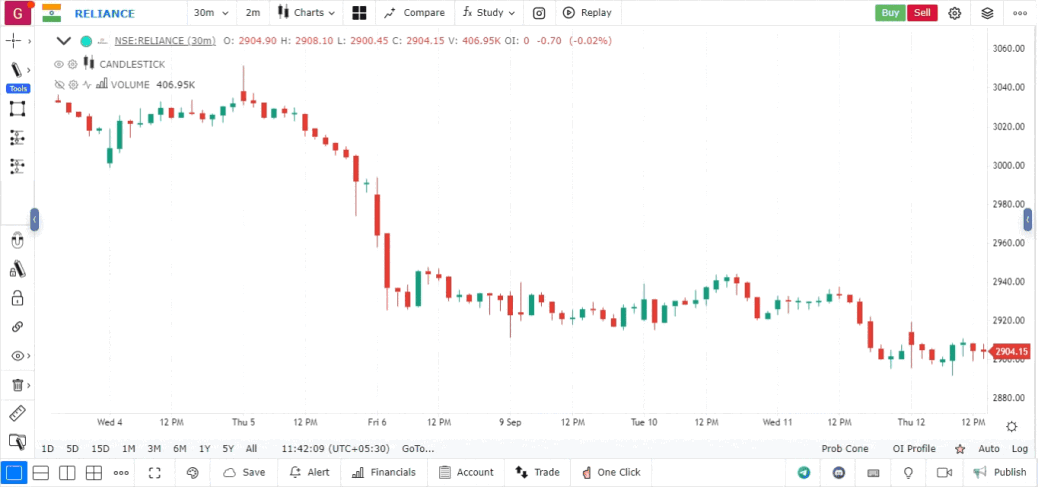The X-Line Drawing Tool
The X-Line Drawing Tool is designed to help users draw a straight line across the chart, typically used to mark horizontal levels of support, resistance, or other significant price levels. This tool is especially useful for identifying key price areas where the market has shown repeated behavior, such as reversals or consolidations.
How to Use the X-Line Drawing Tool
-
Open the Chart:
- Log in to your account.
- Load the chart of the asset or instrument you want to analyze.
-
Access the Drawing Tools Menu:
- Find the drawing tools menu, usually located on the left-hand side or at the top of the platform interface.
- Click on the drawing tools icon to display a list of available tools.
-
Select the X-Line Tool:
- From the list of drawing tools, choose the X-Line Tool.
- This tool is often represented by an icon that looks like a horizontal line or a cross.
-
Draw the X-Line:
- Click on the chart at the specific price level where you want to place the X-Line.
- The X-Line will automatically extend horizontally across the entire chart at that price level.
-
Customize the X-Line (Optional):
- Right-click on the X-Line to open the customization options.
- You can adjust the color, thickness, and style of the line to match your charting preferences or make it more visible.
-
Move or Adjust the X-Line:
- To reposition the X-Line, click and drag it up or down to the new price level.
- If you need to remove the X-Line, right-click on it and select the delete or remove option.

Use Cases for the X-Line Drawing Tool
- Support and Resistance Levels: Ideal for marking horizontal levels where price has historically bounced off (support) or been rejected (resistance).
- Psychological Price Levels: Highlight key psychological levels like whole numbers or round figures that often act as strong support or resistance.
- Breakout Zones: Use the X-Line to mark breakout or breakdown points, indicating areas of significant price movement.